Tom's Guide Verdict
The Fenix 7 Pro line now has a built-in flashlight, a new heart rate sensor, and some new advanced training metrics. Yet with the flashlight turned off, this is still the same Fenix 7, although that’s by no means a bad thing.
Pros
- +
Built-in flashlight
- +
New heart rate sensor
- +
New hill and endurance scores
- +
37 day battery life
Cons
- -
Not all that different from the current Fenix 7 and Fenix 7S
- -
No skin temperature sensor
Why you can trust Tom's Guide
There’s a Garmin watch for everyone, and the Fenix 7 is designed for the person you’ve always wanted to be — someone who runs their commute, holidays in Yosemite, and loves nothing more than stand-up paddleboarding after a stressful day of meetings. It’s been 16 months since Garmin launched its ultimate adventure watch and now the Fenix 7 series just got an upgrade with the Garmin Fenix 7 Pro.
The new watch has a built-in flashlight and a new heart rate sensor, but how does it compare to the Garmin Fenix 7, and some of the other best Garmin watches on the market? I’ve been testing the Fenix 7 Pro for a week to find out more. Read my Garmin Fenix 7 Pro review below to find out more.
Garmin Fenix 7 Pro review: Price and availability
The Garmin Fenix 7 Pro series was released on May 31, 2023. There are three different-sized watches in the range — the Fenix 7S Pro (42mm), the Fenix 7 Pro (47mm), and the Fenix 7X Pro (51mm). The main difference between each model is the size of the screen, and the battery life, but more on that below.
All of the watches in the Fenix 7 Pro line have solar charging capabilities — unlike the Fenix 7, there’s no standard model in the Pro line. The cheapest watch in the Fenix 7 Pro line starts at $799/£749.
If you’re confused by the ‘series’ of watches, here’s all the pricing information:
| Header Cell - Column 0 | Garmin Fenix 7S Pro | Garmin Fenix 7 Pro | Garmin Fenix 7X Pro |
|---|---|---|---|
| Solar glass | $799/£749 | $799/£749 | $899/£829 |
| Sapphire Solar glass | $899/£829 | $899/£829 | $999/£929 |
| Titanium Sapphire Solar glass | $899/£929 | $899/£929 | $999/£1099 |
If you’re looking for a bargain, it’s likely that the original Fenix 7 line will be discounted now that the newer watches have been released.
Confused by the differences between the two watches? Check out our Fenix 7 vs Fenix 7 Pro face-off here.
Garmin Fenix 7 Pro review: Design and display
At a glance, the Fenix 7 Pro looks pretty identical to the Fenix 7 in terms of design and display. The Fenix 7 Pro has a touchscreen, which allows you to swipe through and tap options like you would on any of the best smartwatches. The touchscreen is automatically disabled during sports modes, allowing you to start and stop your workouts, and navigate around the watch using the five buttons — three on the left, two on the right.
None of the watches in the Fenix 7 Pro line have the AMOLED screen we’ve seen on the Garmin Epix 2, and the newer Garmin Forerunner 265 and Garmin Forerunner 965. Instead, the watches have an MIP display, which is still bright and easy to see, even in direct sunlight. The screen on the standard version is made from Gorilla Glass, which is still resistant to knocks and scratches. All of the watches in the Fenix 7 Pro range have Power Glass, which allows for solar charging, extending the battery life of the watch.
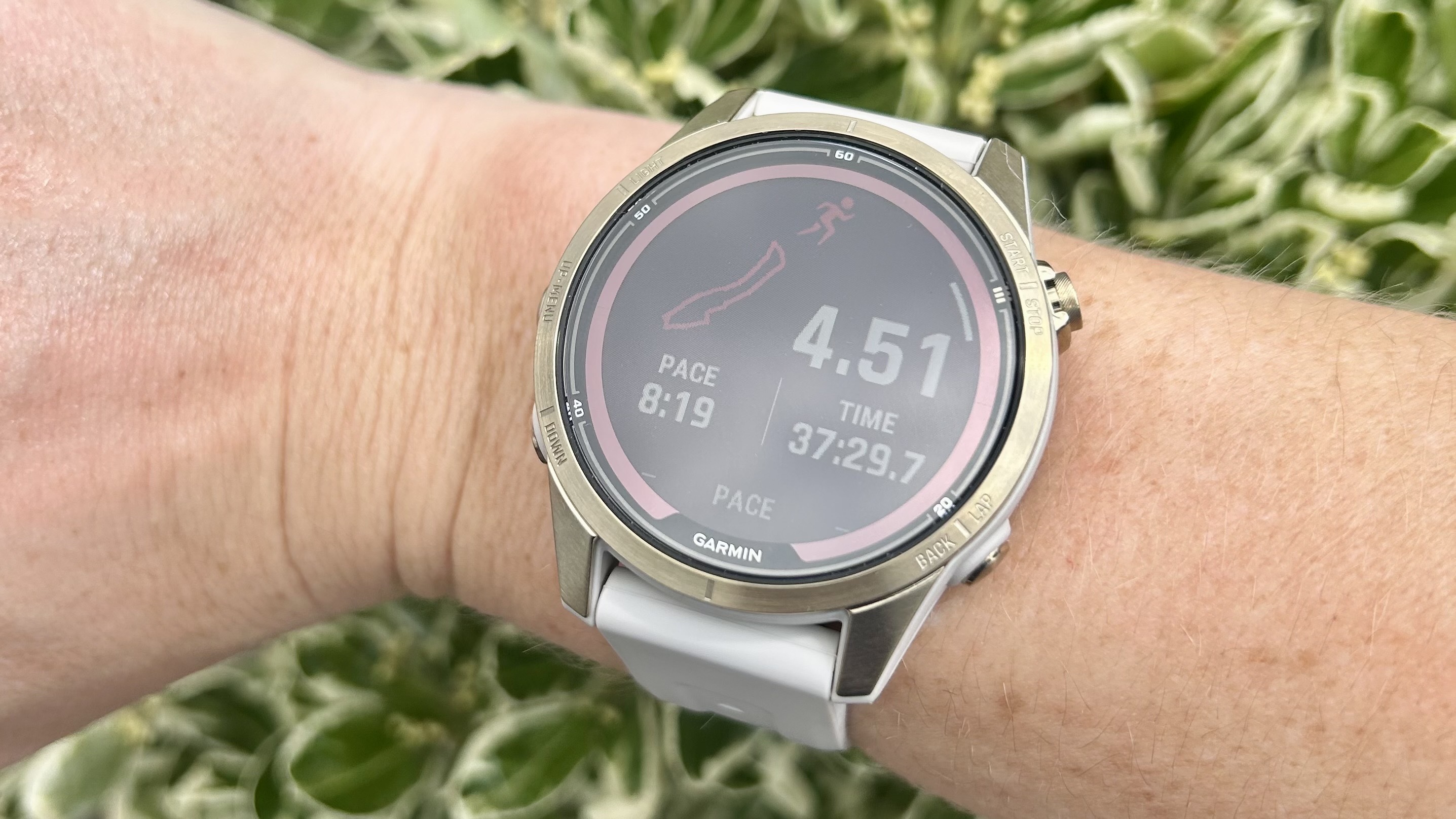
So what’s different? When comparing the Fenix 7 Pro line to the Fenix 7, there are a few notable differences, the main being a new heart rate sensor.
The next-generation sensor has “more spatially diverse optical sensors,” according to Garmin. This means it offers enhanced performance tracking for a variety of different sports modes. It's not clear whether this is Garmin's Elevate V5 sensor, but we do know it has twice as many LEDs as that of the Epix 2, spread over a wider area. According to Garmin, the "more spatially diverse" sensors and updated algorithms result in more accurate data. I’ve tested the heart rate sensor with a Garmin chest strap heart rate monitor, and found it pretty spot on, yet I never had an issue with the Elevate V4 sensor in the Fenix 7.
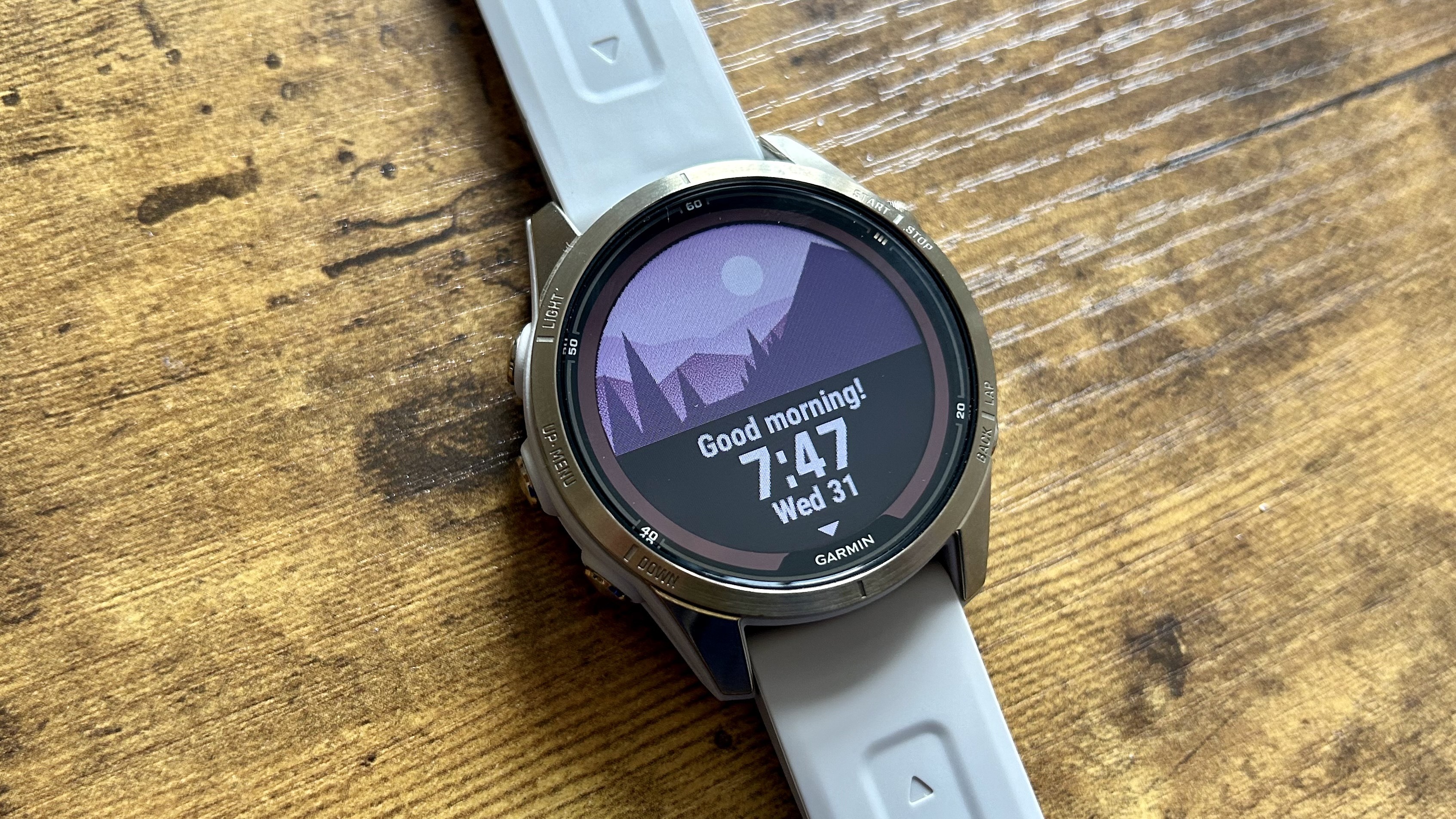
There’s also a built-in flashlight on all the watches in the Fenix 7 Pro range. The flashlight was first introduced on the Fenix 7X last January and can be used in situations where you might use your phone’s flashlight, but can also be used in certain sports modes, as the flashlight can blink or pulse on a bike ride. There is also a running-specific cadence visibility flashlight, where the watch will flash white as your wrist goes forward, and red as your arm moves back, in order to help keep you safe and seen.
I’m a huge fan of the built-in flashlight, which you can activate by pressing twice on the light button on the left-hand side of the watch. I loved the idea of it when it was released with the Garmin Fenix 7X last year, but not enough to strap a 51mm watch to my wrist (I struggle with the heft of the Apple Watch Ultra, and couldn’t comfortably wear anything bigger). As a female runner who spends a lot of time running alone, little extras like the flashlight can make me feel safer in the winter months — there’s even an SOS beacon flashlight mode built-in.
Garmin Fenix 7 Pro review: Running features
From a fitness perspective, Garmin has added some new activity profiles, including whitewater rafting, motocross, and overlanding. Apart from this, the watch has all of the same impressive range of fitness tracking capabilities as the Fenix 7.
There are two new running features — hill score, which shows you from your wrist how easy it is to run uphill. Garmin does this by measuring your running strength on steep elevations, and endurance on long ascents, as well as progress over time, based on your VO2 max, and training history.

There’s also a new endurance score, which is a measure of how easy it is for you to sustain prolonged efforts, looking at data like VO2 max, and your short and long-term training loads. These new training features will also be available on older Fenix 7 and Epix 2 models in a later firmware update.
Garmin has also tweaked the mapping capabilities on the Fenix 7 Pro line, making it easier to view upcoming weather conditions.
Garmin Fenix 7 Pro review: Battery life
The battery life is another area where the Garmin Fenix 7 packs a huge punch over its competitors, and this is partly down to the range’s solar capabilities. Solar charging was first introduced on the Garmin Fenix 6 series, and has been added to the Garmin Instinct and Enduro series. The solar charging elements of the watches include a thin rim, which surrounds the inside edge of the display, and a layer below the glass.
In the Fenix 7, Garmin increased the surface area of the solar panels on the watch by up to 54%, by increasing the efficiency of the solar panels and decreasing the power draw of the watch itself.
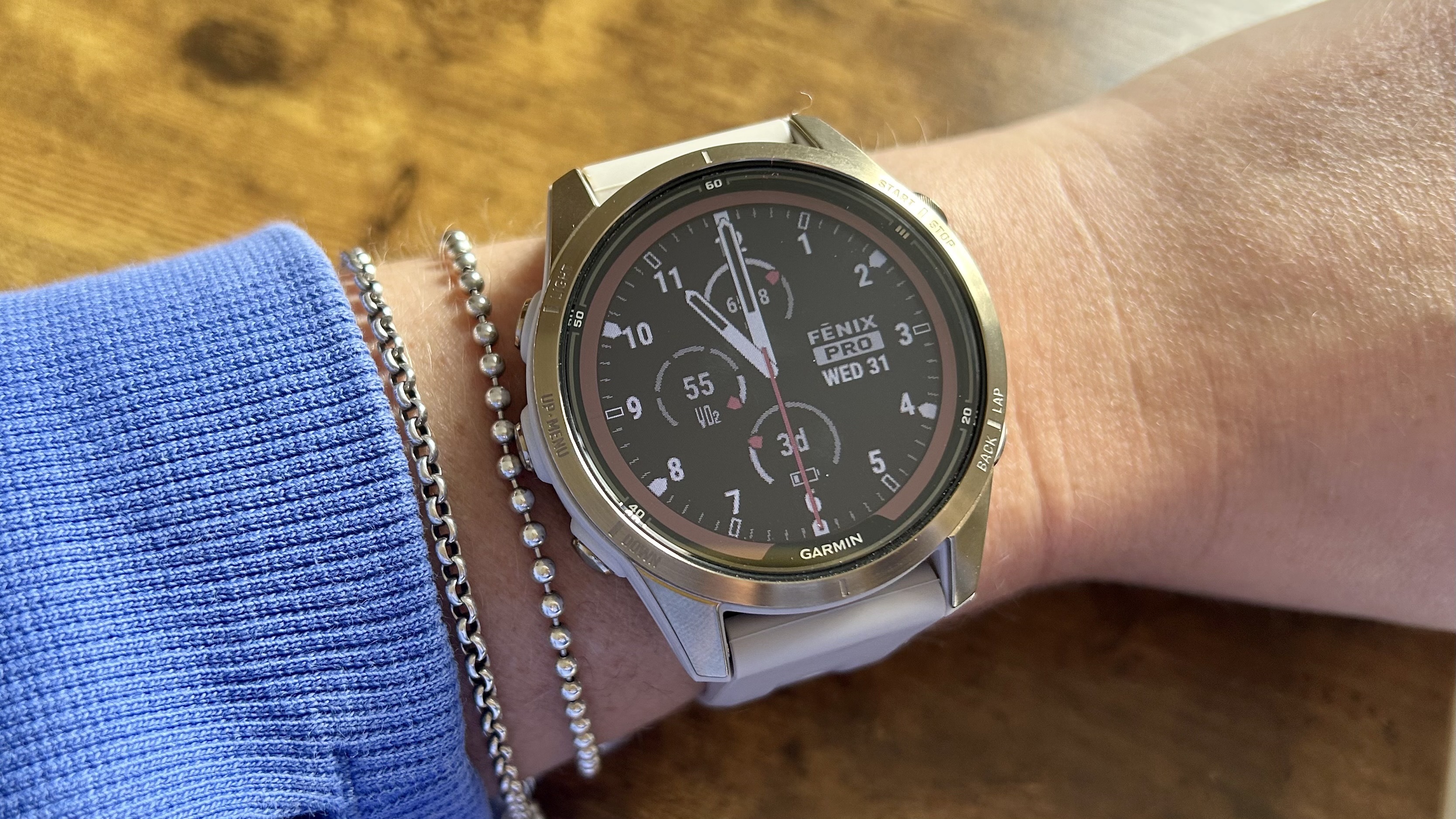
While the screen of the Fenix 7 Pro isn’t anywhere near as bright as the AMOLED screens we’ve seen Garmin release recently, it’s still easy to see in direct sunlight, and on dull grey days. Of course, the benefit of the MIP display is that it has solar charging capabilities, extending the already excellent battery life of the Garmin Fenix 7 Pro line. Here are all the key battery life stats:
| Header Cell - Column 0 | Garmin Fenix 7S Pro | Garmin Fenix 7 Pro | Garmin Fenix 7X Pro |
|---|---|---|---|
| Smartwatch mode: | Up to 14 days | Up to 22 days | Up to 37 days |
| Smartwatch mode with GPS: | Up to 46 hours | Up to 73 hours | Up to 122 hours |
During a week of testing with the Garmin Fenix 7S Pro in smartwatch mode, recording at least three hours of activity per day, and am still on 27% charge. I could easily travel for a weekend marathon abroad with this watch, without worrying about packing a charger.
There’s not any difference in the battery life between the Fenix 7 solar editions and Fenix 7 Pro. The larger watches last longest between charges, so if battery life is essential for you, it’s worth looking at the Fenix 7 of Fenix 7X.
| Header Cell - Column 0 | Fenix 7S | Fenix 7S Pro | Fenix 7 | Fenix 7 Pro | Fenix 7X | Fenix 7X Pro |
|---|---|---|---|---|---|---|
| Max battery (smartwatch) | 11 days/ 14 days (solar) | 14 days | 18 days/ 22 days (solar) | 22 days | 37 days | 37 days |
| Max battery (GPS) | 37 hours/ 46 hours (solar) | 46 hours | 57 hours/ 73 hours (solar) | 73 hours | 122 hours | 122 hours |
Garmin Fenix 7 Pro review: Smartwatch capabilities
One area where Garmin Fenix 7 Pro falls short compared to the likes of the Apple Watch Ultra is from a smartwatch perspective. Whereas the Ultra is like wearing an iPhone on your wrist, the Fenix 7 Pro still feels a lot like a sports watch. There’s no voice assistant, and you can’t make calls from the watch. There is the option to mirror your phone’s notifications, but you can’t reply to messages from your wrist. Although I’d argue you don’t buy a Garmin adventure watch to check your Instagram notifications on the move.
Both watches have Garmin Pay, allowing you to use your watch to make contactless payments on the move. They also both have the ability to download and play music from Spotify, Deezer, and Amazon Music. There’s also an on-watch app store, which means you can install Connect IQ apps from the watch, rather than having to sync from your phone.
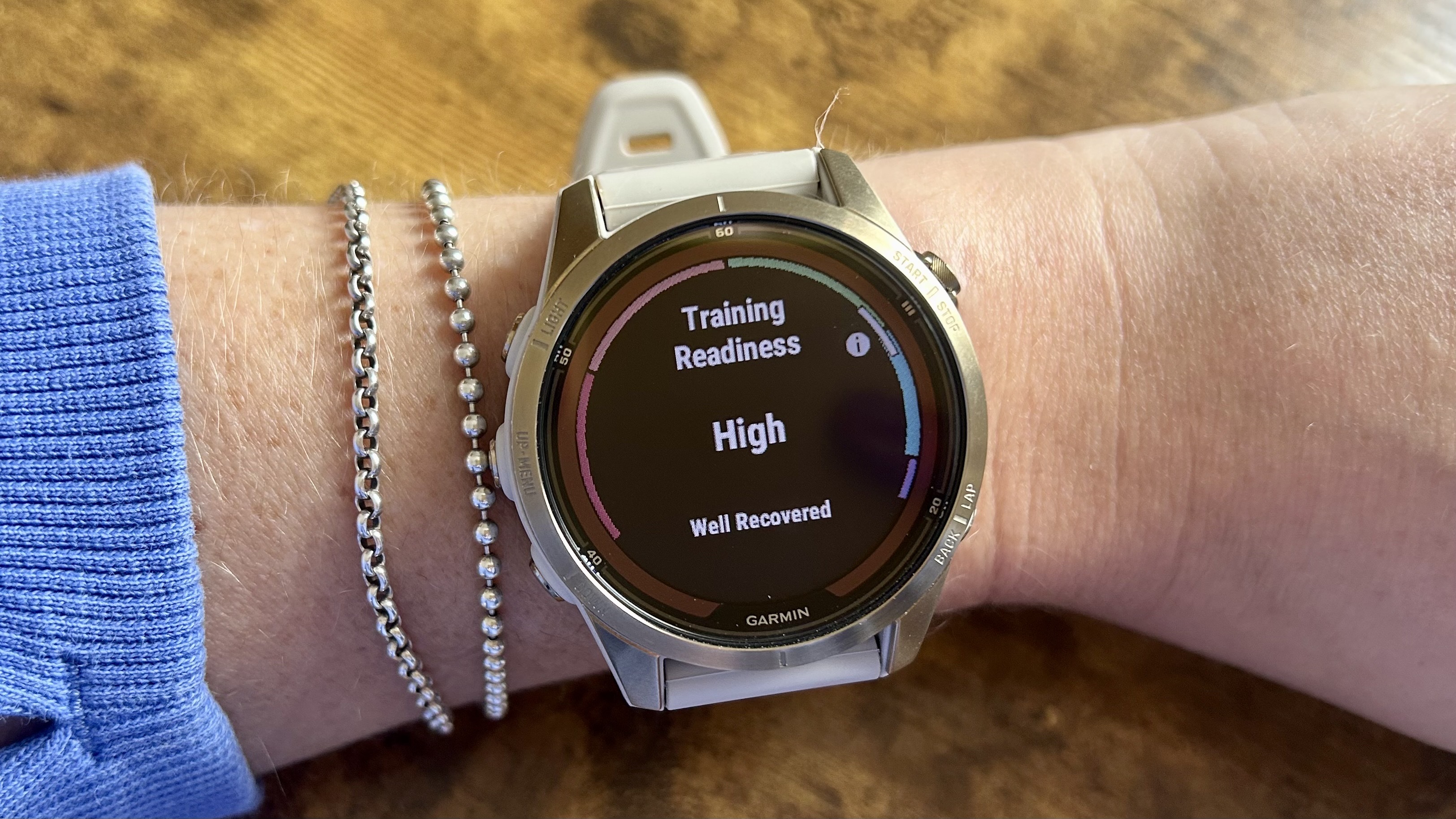
Finally, the Fenix 7 Pro looks beautiful on the wrist. Like many of the best smartwatches on the market, the Fenix 7 Pro is designed to be worn 24/7, and it ticks those boxes.
The responsive touchscreen makes it easy to scroll around the watch and check notifications on the move. And as a runner, I like that I can still use the physical buttons to navigate around the watch when I have sweaty fingers..
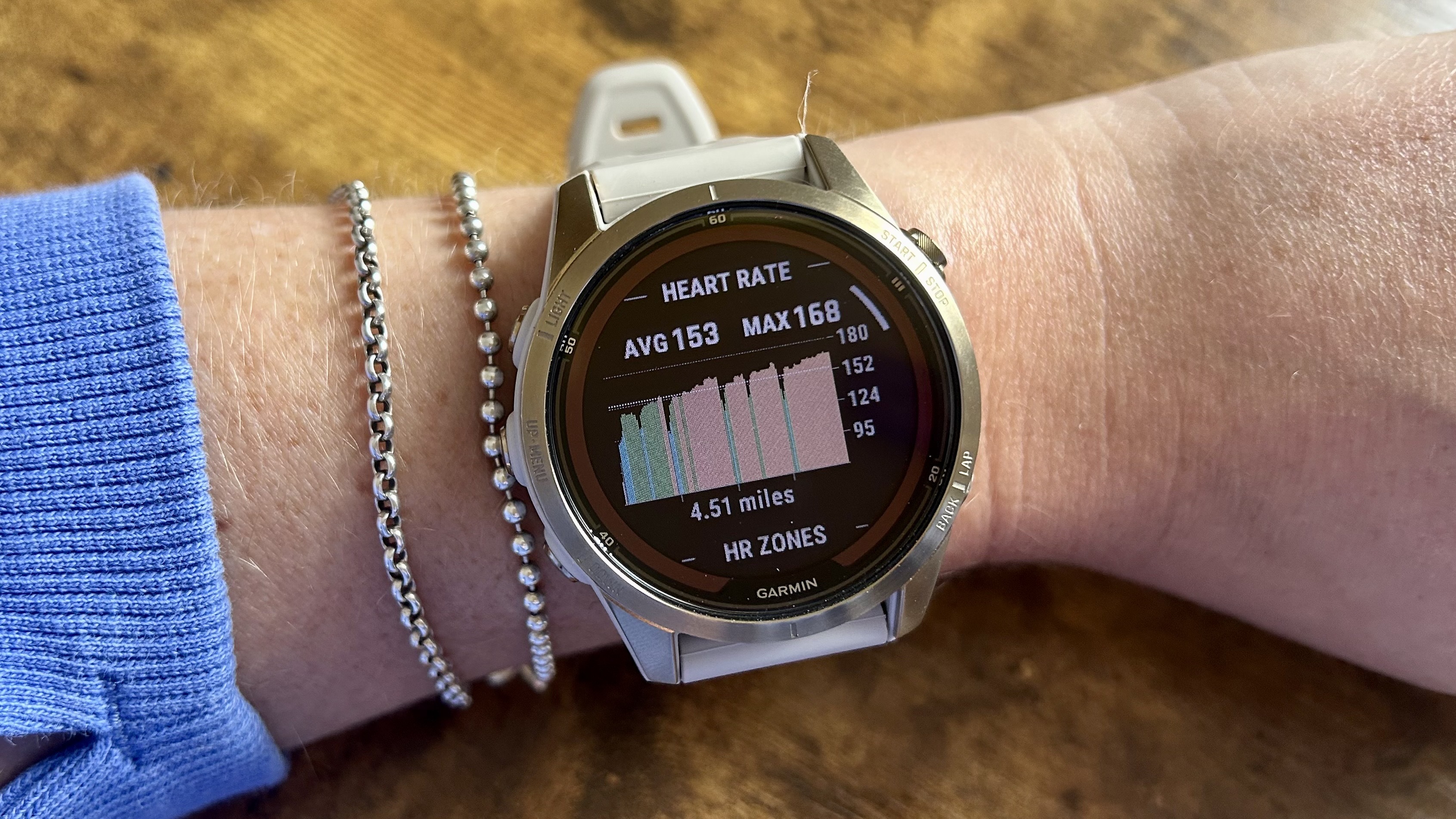
Garmin Fenix 7 Pro review: Verdict
There are elements I like about the Fenix 7 Pro. I love the flashlight, and the new sensor is definitely impressive, but I was hoping for a little more. I still wonder why Garmin hasn’t added a skin temperature sensor to its high-end watches, which could enhance menstrual tracking and health data. But perhaps that's coming with the Garmin Fenix 8.
If you already have a Garmin Epix 2 or a Garmin Fenix 7S on your wrist, this one probably isn’t worth the upgrade. However, if you’re wearing an older Forerunner and you want the ultimate adventure watch, this is a good one. Although unless you need the huge battery life, I'd be tempted to look at the Garmin Epix Pro, which is very similar to the Fenix, but with a brighter AMOLED screen.
If you're on a budget, it's worth saving your money and shopping for the Garmin Forerunner 965, which is $200 cheaper than the cheapest Fenix 7 Pro, and has a lot of the same features.

Jane McGuire is Tom's Guide's Fitness editor, which means she looks after everything fitness related - from running gear to yoga mats. An avid runner, Jane has tested and reviewed fitness products for the past five years, so knows what to look for when finding a good running watch or a pair of shorts with pockets big enough for your smartphone. When she's not pounding the pavements, you'll find Jane striding round the Surrey Hills, taking far too many photos of her puppy.

